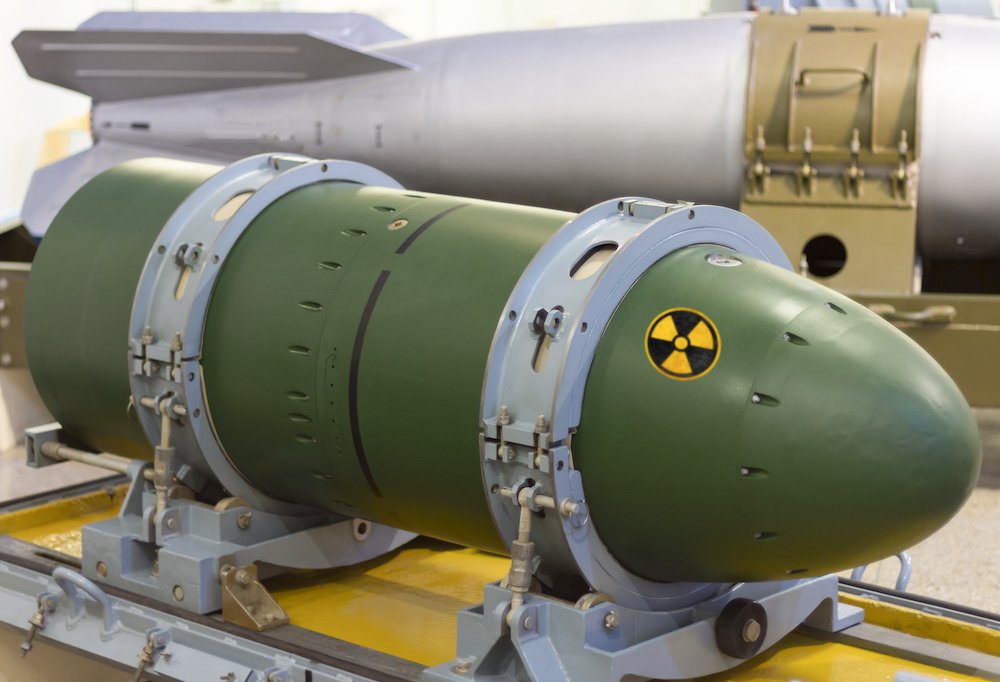Think The Unthinkable: The Nuclear Threat Is Growing
In February, 2026, the treaty that limits the number of nuclear arms the U.S. and Russia each may deploy expires. If that treaty is not extended or replaced by a new pact, each nation will be free to add to its treaty limiting arsenal of 5,500.
How many? At its peak in the 1980s, the U.S and Russia together had more than 60,000 nuclear weapons.
Today, it’s not just the number, but the effectiveness of those arsenals, their proliferation and the international tensions that increase the threat of their use.
Putin has openly warned he could go nuclear against Ukraine. Pakistan and India, two nuclear armed countries, are once again on the verge of war with one another. China, which has designs on Taiwan, is increasing its arsenal. Iran is near nuclear capability, a line crossed that Israel is not likely to tolerate. North Korea? Enough said.
As you can see from this graphic, the threat now is greater than ever.
The Role of AI in Nuclear Launch Systems
The U.S. has plans to spend trillions modernizing its entire nuclear arms capability.
Modernization almost certainly includes artificial intelligence, and with it some form of autonomous launch software. AI, it goes without saying, does not care how many casualties result from a button triggered, or whether anyone is around afterward to analyze what part of the launch code went wrong.
And that’s the other thing about nukes. Like all other machines and human activity, things sometime go wrong.
Like the time U.S. radar mistook a flight of birds for incoming missiles. Even a rising moon once sent off alarms. Then there was the U.S. bomber that broke up off the coast of North Carolina. The H-bomb it dropped came perilously close to turning the East Coast into a mega-Hiroshima. Watch the hair-raising story below.
The Near Miss That Nearly Triggered World War III
During the Cuban missile crisis in 1962, when I was on the staff of the governor of Alaska, he and I sat in the living room of the commanding general of military forces stationed there, red telephone and all, hearing that the U.S was at the brink of nuclear war with Russia.
And it came perilously close to starting. As the world learned much later, a Russian submarine commander who was out of communications touch with Moscow thought a war had begun and gave the order for a nuclear launch against a U.S. aircraft carrier. Only the fact that another officer quickly countermanded it saved a planet-wide holocaust. Here’s that story.
Few people alive today know that story, or remember the Cold War. School kids told to hide under desks. People advised to build backyard shelters. A million anti-nuke protesters demonstrating in New York’s Central Park. Millions more in the streets the world over, begging leaders to end the nuclear threat.
Citizen action helped drive Russia and the U.S. to the negotiating table. Treaties have tamped down the threat, but didn’t end it. Now, the last of those treaties may expire.
We don’t hear much about all this. But we should.
Why Nuclear War Isn’t Just History—It’s a Current Risk
Last October, the New York Times published a masterpiece of journalism titled “At the Brink. A Series About the Risk of Nuclear Weapons In An Unstable World.” Reading it, you understand why Planet Earth would almost certainly be a Planet of the Apes type of place with just few miserable people left to mourn it after a nuclear war.
Yes, that’s scary. But as the New York Times said in its series introduction, “Nuclear War Is Called Unimaginable. In fact, It’s Not Imagined Enough.”
Nuclear war is not something we want to think about. But right now, today, awareness and action to prevent one is essential. Before the few who survive are left thinking about nothing else.
Comments? Criticism? Contact Joe Rothstein at jrothstein@rothstein.net
Always Get It’s Always Something
Sign up to get the most recent column set to your inbox for free.



What happens when a fun-loving, charismatic, reform-minded Mexican-American billionairess becomes president of the United States and strikes fear in the pocketbooks of a cabal of the rich and powerful?